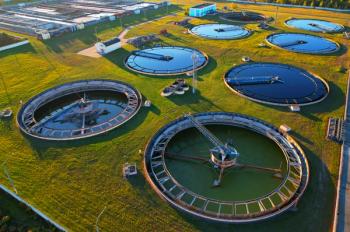
- LCGC North America-08-01-2012
- Volume 30
- Issue 8
Understanding Ion-Exchange Chromatography
Ion-exchange chromatography (IEC) is based on the different affinities of analyte and eluent counterions for the oppositely charged ionic functional groups on the stationary-phase surface of an exchange resin. Depending on the charge of the surface electrostatic groups, the resin could be either an anion exchanger (positively charged stationary phase) or a cation exchanger (negatively charged stationary phase).
Ion-exchange chromatography (IEC) is based on the different affinities of analyte and eluent counterions for the oppositely charged ionic functional groups on the stationary-phase surface of an exchange resin. Depending on the charge of the surface electrostatic groups, the resin could be either an anion exchanger (positively charged stationary phase) or a cation exchanger (negatively charged stationary phase).
In IEC, retention is based on the affinity of different analyte ions and counterions for the charged site on the stationary phase surface and on a number of other solution parameters, including counterion type (strength) and concentration. In general, the elution (eluotropic) strength of the mobile phase is controlled via the nature of the counterion chosen (some counterions are more surface active than others and therefore displace analytes ions more readily), the concentration of the counterion (displacement by the laws of mass action) as well as eluent pH, organic additives, and temperature.
Due to the corrosive nature of the eluent system, IEC columns are usually based on alternative materials (such as polyether ether ketone [PEEK]) rather than stainless steel. Ion-exchange materials are prepared by attaching ionic functional groups to the supporting matrix. The functional groups are typically attached to a polymeric matrix and the dominant forces that control retention will be ionic; however, the chemistry of the polymer substrate can be manipulated to impart some polar (hydrophilic) or nonpolar (hydrophobic) characteristics to the retention mechanism. The most common functional groups in commercially available ion exchangers are sulfonic and carboxylic acids for cation exchangers and tetramethylamino functional groups for anion exchangers; however, there is a vast array of different substrates (including small particle size, high efficiency particles) and bonded phase ligands available for various application types.
Separation selectivity in IEC is mainly based on differences in the material of column construction and the functional groups bonded to the polymer surface (stationary phase).
In general terms, the IEC process consists of four main steps:
1) Equilibration of the stationary phase: When the equilibrium is reached all functional groups in the stationary phase are associated with exchangeable counterions.
2) Sample application and wash: Analyte retention via electrostatic interaction with charged surface ligands after displacement of the weakly bound counterion. All non-ionic sample components will be poorly retained.
3) Elution of retained analytes from the column: Usually accomplished by increasing the ionic strength (ionic strength gradient) or pH (to suppress the charge in either the analyte or the stationary phase surface) of the eluent or changing to a stronger counterion.
4) Column regeneration: All strongly retained species must be removed to restore the full capacity of the column. This step is usually accomplished by changing the eluent pH or buffer composition.
IEC pumping systems use reciprocating pumps that cope with the pressure and volumetric needs of most applications. As many of the eluent systems used in IEC can be corrosive, IEC system components tend to be constructed from, or have hydraulic pathways that are constructed from, polymer materials (PEEK is typical). In contrast to other modes of liquid chromatography, the electrical conductivity detector is one of the most important detection types in IEC. It measures the conductivity of the mobile phase and therefore it is not a solute property detector but a bulk property detector. Becasue many ions and ionic species measured using IEC will not have a chromophore for UV detection, the ability to measure the bulk conductivity (for example) provides a widely applicable and sensitive detection method. Electrochemical detectors can be used to determine bulk response in conductivity, amperometry, coulometry, and voltammetry modes. Mass spectrometry continues to emerge as a very useful detection method for IEC as does evaporative light scattering detection — especially in the field of life sciences analysis.
Most modern instruments are equipped with eluent regeneration or generation devices that function to either regenerate the eluent system postdetection or generate simple (H+ and OH– ) eluent systems in situ, which significantly improve the convenience of the system and serve to reduce operator error.
Suppressor systems are used to increase sensitivity of the technique by lowering the column's effluent background conductivity before it enters the detector. As a consequence, ion suppressors may be considered integral parts of the detection system. Different approaches have been implemented to suppress background response and are categorized as "continuous" (column format) or "discontinuous" (regenerating devices). Modern regenerating devices are highly elegant and modern electrochemical suppressors using platinum electrodes for the hydrolysis of water to produce H+ and OH– ions and semipermeable ion-exchange membranes to selectively reduce the ionic strength of the eluent system; they are self-regenerating and require little or no maintenance.
Articles in this issue
over 13 years ago
Plates Versus Selectivity: An Emerging Issue With Complex Samplesover 13 years ago
Questions From Afarover 13 years ago
Separation Science: Past, Present, and Futureover 13 years ago
Analysis of the State of the Art: Gas Chromatography Instrumentationover 13 years ago
LCGC and Its Readers: 30 Years StrongNewsletter
Join the global community of analytical scientists who trust LCGC for insights on the latest techniques, trends, and expert solutions in chromatography.





